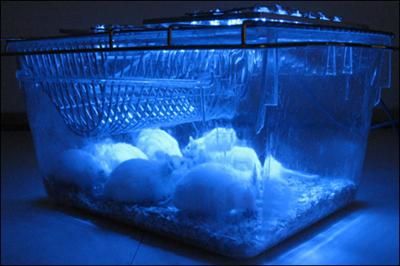Другие журналы
scientific edition of Bauman MSTU
SCIENCE & EDUCATION
Bauman Moscow State Technical University. El № FS 77 - 48211. ISSN 1994-0408
Blue light enables genes to turn on
25.06.2011
 (Medical Xpress) - With a combination of synthetic biology and optogenetics, researchers from the Swiss Federal Institute for Technology published a paper in Science outlining their new technique which enables certain genes to be turned on simply by the switch of a light.
(Medical Xpress) - With a combination of synthetic biology and optogenetics, researchers from the Swiss Federal Institute for Technology published a paper in Science outlining their new technique which enables certain genes to be turned on simply by the switch of a light. Optogenetics uses genetics and different optical methods to create and activate cells in living tissue with the use of light. Synthetic biology combines science and engineering to create new biological functions that are not found naturally.
Led by synthetic biologist Martin Fussenegger, the team used melanopsin which is a molecule that is found on neurons within the retina and is light sensitive. These molecules are responsible for keeping the biological clocks synchronized with day and night. When light hits these molecules, the melanopsin stimulates a molecular change that causes in influx of calcium ions and an electrical pulse.
The researchers placed the melanopsin gene into embryonic kidney cells, thus making them light sensitive. When exposed to blue light, these cells create an influx of calcium ions. However, instead of an electrical pulse, the light triggers a transcription factor known as NFAT that moves into the cells nuclei and bind to DNA sequences that are known as promoters. This binding activates certain genes within the cells.
To test their technique, researchers used diabetic mice and engineered cells to create a glucagon peptide when exposed to blue light. The mice were implanted under the skin with hundreds of microcapsules that held around 10 million of these engineered cells. When the mice were exposed to the blue light, they had an increase in insulin production and more regulated glucose.
While this technique is still in the early stages, there is hope that these light sensitive cells can be used for diabetic treatment and to boost the production of biological drugs which are currently used in cancer treatments.
More research needs to be done on the potential side effects. The release of calcium into the cells triggered by the light exposure may have unintended side effects and it is this reasoning that kept the group from starting this project for some time. Currently they are looking at using the technique to manufacture pharmaceutical drugs.
Source: physorg.com
Photo: physorg.com
| Authors |
| Press-releases |
| Library |
| Conferences |
| About Project |
| Phone: +7 (915) 336-07-65 (строго: среда; пятница c 11-00 до 17-00) |
|
||||
| © 2003-2024 «Наука и образование» Перепечатка материалов журнала без согласования с редакцией запрещена Phone: +7 (915) 336-07-65 (строго: среда; пятница c 11-00 до 17-00) | |||||



